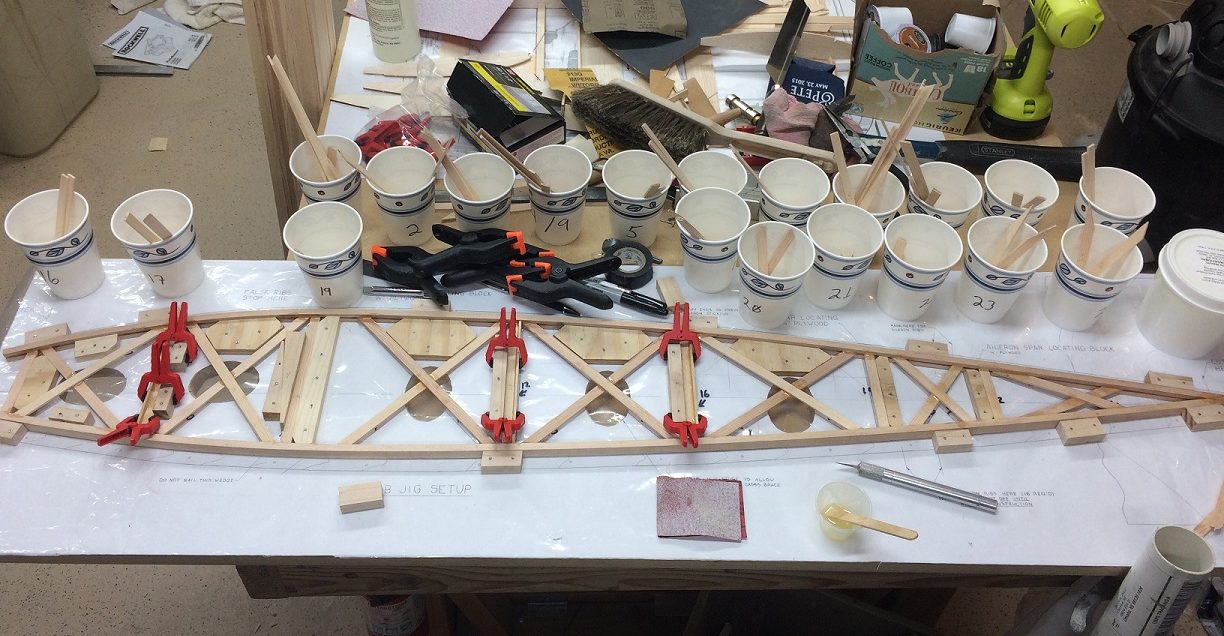This morning I pulled the first rib out of the jig to check it out. I was a little apprehensive about it, to be honest. I had tried to use a little digital scale to weigh out the epoxy, and that didn’t work well. The scale didn’t see tiny increases in weight as “activity” and would power itself off every few seconds. I ended up “eyeballing” the mix by volume, and hoped I got it right. With a little less than 15cc of glue I was hoping it was right, and last night it was still feeling a little “tacky”. Well, this morning that epoxy is perfect, nice and hard, glossy surface and zero tack. My test piece with a couple of scraps of geodetic brace glued with no clamping broke apart in pieces, with no failure at the glue joint. The wood failed and the glue didn’t. Success all around.
The only deficiency I can see is, there’s maybe a little more glue than needed. Glue had run down under several of the joint areas and I have some cleanup to do on the “bottom” side of the rib, the side that was against the jig surface. I’ll need to figure out how to get the right amount of glue in there when I pre-glue the groove. Other than that, it looks really good and I’m thrilled with it. It looks like about 10cc is what is needed to glue up a complete rib. That means when I get the second jig built, I can mix up 20cc and glue two ribs at a time. The more glue gets mixed at one time, the easier it is to get the mix ratio perfect so that will be good.
And, I’ll have to put this rib somewhere in the middle of a wing where it can’t be seen by the Oshkosh judges. That way it won’t screw up my chance at that gold Lindy. 🙂

